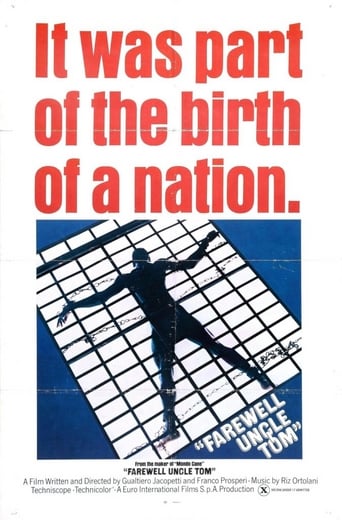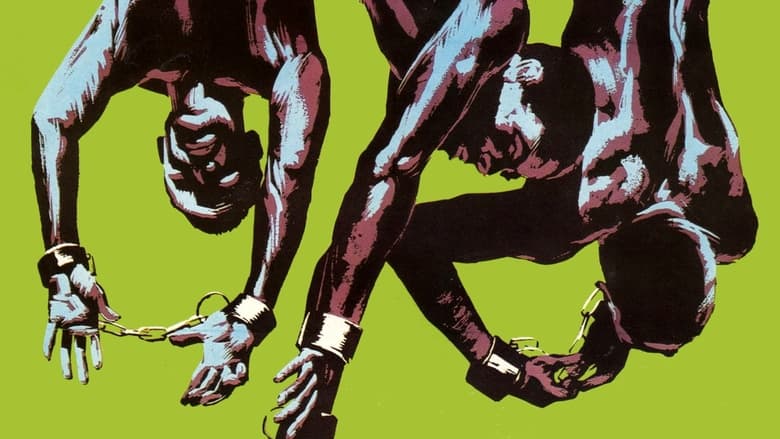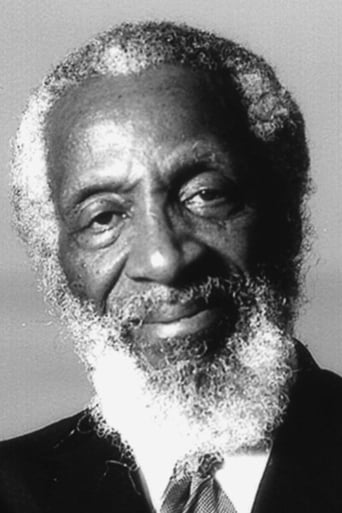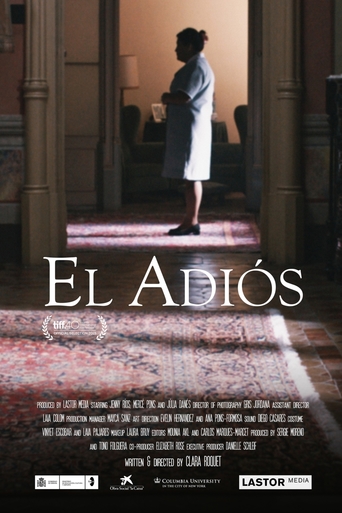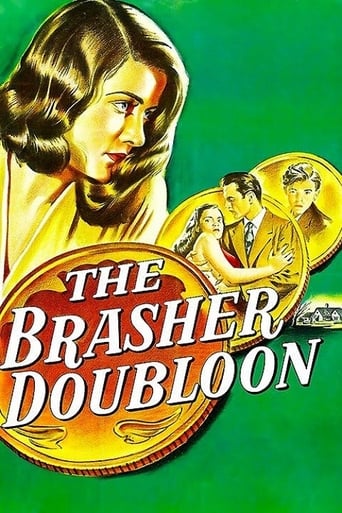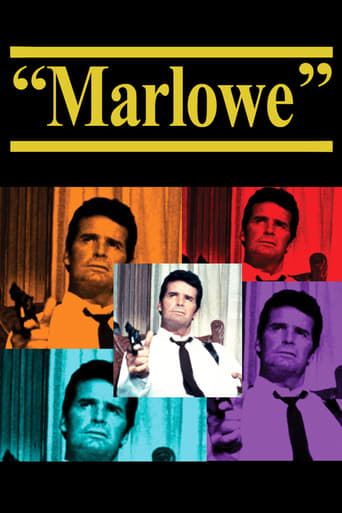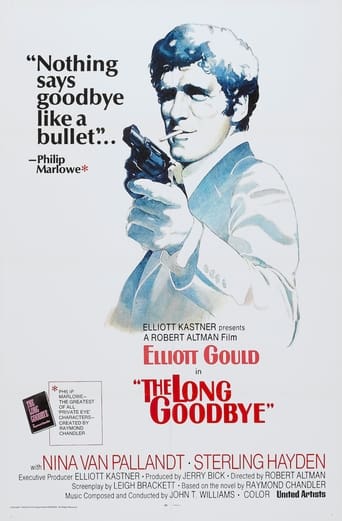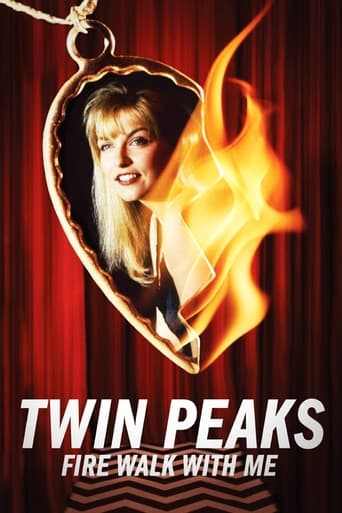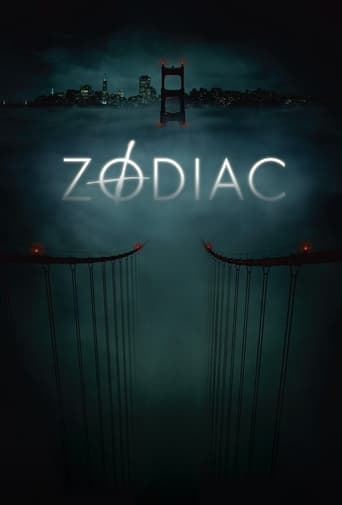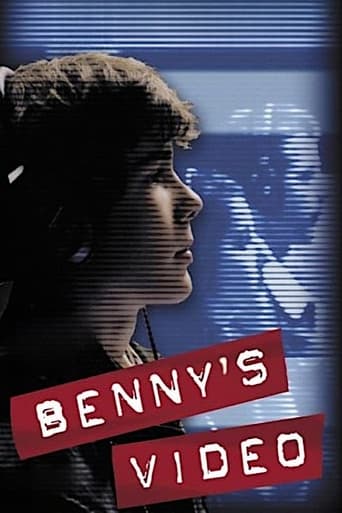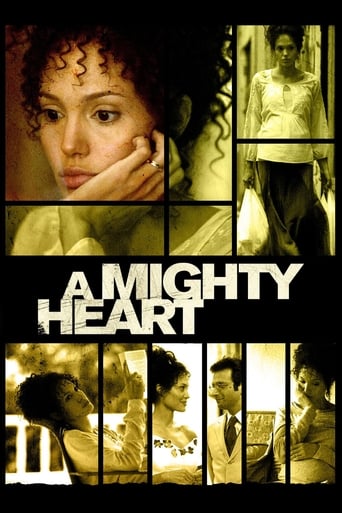Goodbye Uncle Tom (1971)
Two documentary filmmakers go back in time to the pre-Civil War American South, to film the slave trade.
Watch Trailer
Free Trial Channels
Cast


Similar titles
Reviews
Excellent, a Must See
Brilliant and touching
A waste of 90 minutes of my life
By the time the dramatic fireworks start popping off, each one feels earned.
Goodbye, Uncle Tom is one of the Mondo films released in Italy in the seventies. I'm not a fan of this type of film and therefore I've only seen a handful of them - however, from my basic knowledge of the genre; this one is way above average and actually delivers a good film to go along with the numerous shocks. I have to be honest and say that the central theme doesn't really interest me. The film is basically an exploitation style documentary the American South prior to the civil war and primarily focuses on the slave trade. I don't know a great deal about this period of history and so I can't say how accurate this film is - but really it doesn't matter. While the film follows a documentary approach; that's really not the strongest element of Goodbye, Uncle Tom. The film, for me, is all about style and directors Franco Prosperi and Gualtiero Jacopetti lay this style on thick and it really works brilliantly. The music (excellent score by Riz Ortolani) and the cinematography are fascinating, and this is a real bona piece of seventies Spaghetti film-making.Films like this are generally designed to shock the viewer, and that is certainly the case here. The central theme allows for plenty of shocks and the most shocking scene on a visceral level is probably the rape sequence. However, the core of this film's ability to shock stems from the premise upwards and it's uncomfortable, especially in these times, to see how black people were once treated by their "masters". A scene in which a slave trader explains what his slaves are worth in the same way a cattle rancher might try and sell his stock, and why you cannot train an Indian to be a slave is the most shocking in this respect. It's hard to really rate the film alongside others in terms of acting and the script; but suffice to say, everything shown in the film is very realistic and it wouldn't be hard for an audience to believe that the film is taking place in pre-civil war America (if it weren't for the fact that film-making equipment was not invented back then, of course). Overall, Goodbye Uncle Tom is a great piece of exploitation that shocks, thrills and intrigues in equal measures. Highly recommended viewing.
If it were possible to give this waste of film any less than a single star rating I would have done it. What a piece of drivel and a total waste of anyones time to even think about watching it. Historically it has zero value and hold absolutely no bases in fact. Allow me to break down all the elements of the film for you. The cinematography is so lousy it leads one to believe that they must have hired a drunkard to run the camera. The editing is choppy and impossible to follow. The actors in this film must have been hand picked by a fourth grade drama teacher. The sound score is completely ridicules, and I hope whoever wrote it didn't give up his day job at the car wash. If I were the director of this film, I would have either killed myself, or moved to Burma. Of course they're are some idiots who actually liked the film. These are the same people who laugh at children getting hacked to pieces. You can find them and their type hanging out at your local parks mens room.
In Goodbye Uncle Tom, two documentarists "travel" to the old American South and explore the slave economy. This world is recreated in all of its brutal and corrosive details, from the shipping to America of slaves in the hulls of ships - the sickening conditions with diarrhoea-ridden slaves chained in their own filth is emphasised - to the brothels where large Mammies coral underage girls for the delectation of white clients. The film is made on an enormous scale. The scenes in the slave markets and on the plantations have literally hundreds of extras, and the marshalling of crowds alone makes the film an exceptional achievement. This is no low-budget cheap-flick but a full, cinemascope extravaganza featuring vast hordes of extras, sweeping crane shots and unfeasibly intricate dolly shots which travel through large sets and teaming crowds, a swarming mass of human flesh, the sheer scale of which leaves one's mouth dropped open in wonder. That wonder is turned into awed disbelief as the brutal, nerve-wrecking content of the film unfolds before one's eyes. This is Gone With The Wind mixed with a supersized portion of Salo.The film is completely plot less. It features a series of set-pieces - all based on research into actual conditions, events and personages - each of which show an aspect of the slave trade. A bustling church has a preaching pro-slavery Pastor presiding over the gelding of African bucks. A mansion is filled to the brim with dozens of slaves, making beds, cooking dinner and helping Missies to dress. A group of nasty-looking rednecks roam a swamp, massacring escaped "merchandise." The scenes get nastier as the film progresses - which seems to be the only logic to the film's progression. There is a particularly insane sequence in which a "veterinary" tells us of his work on the slaves, a sequence redolent of Mengele and the atrocities of the Nazis (the ludicrous German accent this character is given encourages us to make this leap). The final old Southern section of the film concerns a young virgin girl taken to a "breeding farm" and mated by with a nasty, violent old buck stud - the fat "farmer" pontificates merrily about stock as the victim is led to an event which is destined to rip her sexual organs to shreds What is especially freakish about the film is its overwhelming prurience. The camera lingers over the naked male and female bodies of the slaves, and revels in their degradation. This creates a profoundly uneasy feeling in the viewer. It is not merely that this film offers an indictment of an economy in which human flesh became literally a commodity, backed up with the most noxious racial supremacism, but that it dwells so excessively on the minutiae of humiliation and hatred. It almost wills itself to become a repellent and fascinating object - which one could argue is the more honest attitude to take towards human evil. It is as if Goodbye Uncle Tom were the vomit of history flung in the face of the audience, and the audience were being tempted to dance in it a little, as well as vomit over themselves.The end of the film - and it is a long (123 minute) film - is as extraordinary and thoroughly reprehensible as the rest. We suddenly cut to then contemporary America, and watch a black preacher/panther walking along a Florida beach, watching the frolicking wealthy whities at play. He reads The Confessions of Nat Turner - a true-life account of a slave who massacred a number of slaver families in 1831 - and fantasises about killing the honkies around him. Those fantasies are shown to us by the filmmakers in lurid detail, and whitebread families get axes in their heads, knives in their stomachs and their babies battered against walls. This is an incendiary sequence, and must have been particularly shocking in 1971.It is very difficult to know what to make of Goodbye Uncle Tom. On the one hand, its lurid exploitative nature is enough to repel even the most hardened of extreme cinema enthusiasts. What is more, the economics and morality of the film's actual making is enough to send one reeling in horror in and of themselves. It was filmed in Haiti, and a thank you appears on the credits to Papa Doc. It is doubtful any of the thoroughly degraded extras were paid very much for their work, which suggests that the film is itself a product of a coercive and slave-driving economic system; and let's not forget, Haiti was a former slave colony. Nevertheless, it is hard to imagine a film which did more to make the realities of the slave-based economic system more palpable and horrifying. In refusing the audience the comforting delights of character individuation, journeys, change and anything other than economic/racial relationships, the film does constitute an effective dramaturgy for dealing with such an unmitigatingly inhuman episode in human history. In a way, a film like Amistad makes it all alright that slavery happened, because the liberal humanist Spielberg pulls out the trump card of the dignity of the human spirit, the chance for which to triumph slavery (like the holocaust) happened to offer. There is absolutely no human dignity on show in Goodbye Uncle Tom. Slavery is not a business where dignity comes into the equation. One of the film's most intriguing characters in a slave who boasts of his price in the market, his value to his masters, and the healthcare and help in old age which a good master can provide for him. He is an embelmatic proletarian historical figure...What is on show in Goodbye Uncle Tom is a dazzling display of film-making technique. From an editing, cinematographic and staging point of view, the film is a masterpiece.
Not exactly a "humanitarian masterpiece" as someone else said (yeah right!). More like cryptic super-exploitation. This is wildly, hilariously, rollickingly misguided pseudo-history at best. Outright race-baiting at worst. Made by the sleazoids who barfed up "Africa Addios" (giving Africans their own country back so soon just wasn't the right idea, was it!!), a film that featured the genuinely bizarre white South African girls on trampolines montage. A fervent call-to-arms for African-Americans made by white Europeans must inherently ring false, I am afraid. (we enslaved you. kill us!) Manages to be both numbing and completely, hideously insulting at the same time. The film is, under its very "SO racist it isn't being racist" exterior a sly work of racism. Presents blacks as nothing more than animals and savages, capable only of violence or submission to the will of whites. All the while remaining mute and mindless. No African-American in the film is presented as having a personality, substance, or intelligence. Every white all but glows. Every caucasian is a verbose, mercurial, immaculate sprite. That said, the film does (I would assume) approximate the way Africans were treated during the slave era more closely than other films. In that respect it deserves respect. The conditions are shown as filthy, disgusting, cruel. Every imaginable indignity is portrayed (and some you probably could not imagine). However, the film does have some power. The camera work is very inventive and the directors handle some of the chaotic scenes around the plantation very well. Some of the imagery is genuinely striking. There's a general feeling of chaos that comes through that's very effective. I'm not sure what the point is. But it's effective. Anyway, see the movie if you really want to be grossed out and insulted. File this one under SUPER exploitation. The directors may have had good intentions when they started out, but I think they just lost it when they got onto the set and decided to see how far out they could go. And no one, it seemed, was around to tell them to tone it down or put on the breaks. This is up there with Cannibal Holocaust and Men Behind the Sun. It's that sort of a deal. But don't kid yourselves, this AIN'T no humanitarian masterpiece.

